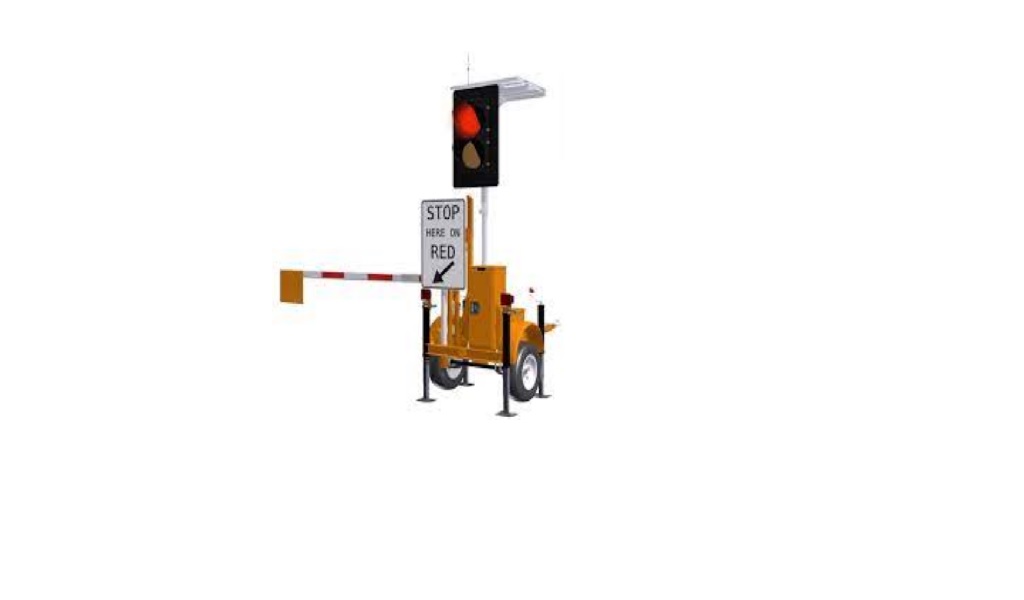Automation has revolutionized how products are assembled, how we fill out computer-generated forms, cook our meals, and pay our bills. Automating or robotic labour is the modern solution for any repetitive task requiring the input of the same information repeatedly or putting human workers in a dangerous or toxic environment.
Some main reasons why roadwork and construction companies use automated flaggers (or robot flaggers) are not only to eliminate the risk of injury or fatality to employees while roadwork is underway but also for a more efficient way to direct traffic around active work areas.
Automated Flagger Assistance Devices or AFADs
Certain work areas are considered TTC (temporary traffic control) zones, where motorists, bicyclists, pedestrians, and persons with disabilities, must be assisted to pass safely. These zones are typical during road construction or repair, overhead utility work, maintenance operations (such as tree trimming), and traffic incidents.
Before these types of outdoor operations begin, planners will determine how many and the location of roadway flaggers to safely redirect people and automobiles around or through these work areas.
Automated Flagger Assistance Devices (AFADs) are used to replace flaggers with an obvious sign, typically with a red signal head that is 12 inches. Instead of posting flaggers with the traditional Stop/Slow paddles at each end of a road closure, an AFAD can be put in one of the travel lanes to control and direct approaching motorists. This electronic signage automatically regulates traffic with the need of only one other person located away from the dangerous traffic site to control the device remotely.
Using a robot flagger reduces the need for additional manpower within work zones. It increases workplace safety by positioning only one human flagger away from moving traffic to control the automated flagger assistance. AFADs are handled using a handheld device – a remote radio controller or an electrical controller connected by cable to the AFAD.
Types of Automated Flagger Assistance Devices
Robotic flaggers will not eliminate the need for trained and qualified human flaggers in work zones. A flagger or other crew member should step in to replace or assist in traffic redirection when and if needed.
Two types of AFADs are recognized in MUTCD Part 6E (The Manual on Uniform Traffic Control Devices). The first is the remote-controlled Stop/Slow sign mounted on a trailer or movable cart. These mobile units can be easily repositioned as the work zone changes along the road.
The second type of automatic flagging device is also remotely controlled. It features a red and yellow lens with a mechanical lift arm attached to the Stop/Slow device to improve the device’s visibility. No matter which type of AFAD is used, it must comply with the detailed specifications of MUTCD Section 6E.04 and other standards, such as the American Association for State Highway and Transportation Officials (AASHTO) Manual for Assessing Safety Hardware.
The best-automated flagger assistance devices warn road crews when a driver fails to stop for the robotic flagger stop arm. The loud-sounding alarm will alert the crew and will give everyone time to try to get out of the way. When choosing an AFAD for your work project, always consider state regulations that may have device standards and guidelines that surpass the ones required by the MUTCD. These may include additional warning signs or the need for backup battery power.
When to use Automated Flagger Assistance Devices
Some projects make using automatic flagger devices the best solution for your road work project. For example, suppose the project is only in progress for a short period, such as for bridge maintenance, patching pavement holes, or extremely large-haul road closure. In that case, an automated flagger is a good idea.
Long-term construction projects or road closures are typically manned by human workers who can make the necessary adjustments, as the project tasks and the location of the crew members may change more often. Also, for work at night, the type of AFAD chosen must be capable of illumination, as stated by Section 6E.08 of the MUTCD.
Also, the placement of the automated flagger assistance device is a consideration. If the device cannot be placed within the shoulder of the road or if the AFAD encroaches on the travel land and will affect the driver’s sight, then another location may need to be chosen. The gate arm of the robot flagger should not extend in adjacent lanes.
Final Thoughts:
Finally, traffic volume should be considered. Check with your state regulations to see which types of roads (two-way, expressways) and the traffic volume allowances apply. Some states have guidelines for using an AFAD on roads with a wide range of average daily traffic (ADT) counts.
Also, note that advanced warning signs should be erected to alert traffic in both directions that an upcoming stop for road work is approaching. When the AFAD is not in use, it should be removed from the direct flow of traffic and covered so that drivers are not mistakenly stopped.

















